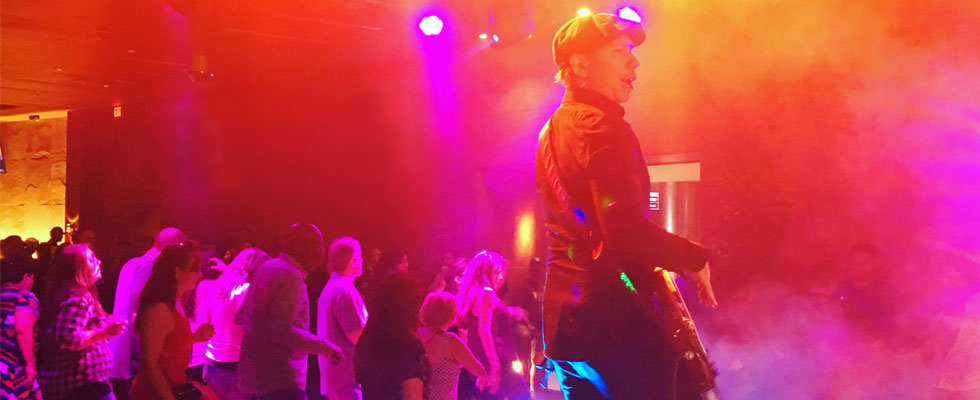First and foremost. This is just my opinion on where the Electronic Dance Music (EDM) genre is headed. However, I will apply some scientific theory to my analysis. If anything more, than to just make me sound MUCH smarter than I am.
With that being said, I want to start off by presenting you with the basic Adoption Cycle. It looks something like this. Some may notice it is a bell curve with a normal distribution and standard deviation.

The adoption cycle concept runs through nearly every conceivable business offering and music consumption is no different. Credit of the current model can be traced back to Everett Rogers who organized consumers into various groups based on their personality traits. According to Rogers, these traits influence their adoption of a new offering in the marketplace. The fashion industry is a great example of how the adoption cycle works. In this example, Gucci will unveil a new line at Milan Fashion Week. Right out of the gate, Innovators will spar and pay top dollar to be the first to don the coveted threads as they are typically of a higher social class and thus inelastic to price. Shortly thereafter, the Early Adopters will seek out the new styles. Many of these individuals are of the opinion class, industry gatekeepers, who influence the longer running growth of the Early Majority, which follows to the apex of the Bell Curve.
At this point, another economic principle takes hold. With Innovators, Early Adopters, and the Early Majority showcasing their new wears, more potential consumers are influenced and demand increases. However, those left are more price sensitive, so they seek out alternatives, which are satisfied through bargain stores such as Macy’s and Target that appeal to that Late Majority. At this point, Gucci has lost their competitive advantage and the company will move onto the next great design, leaving the market to these lesser profitable sales channels. With that exit, price continues to drop allowing the Laggards to pick up knockoff items for bargain prices at lower-cost outlets. Then, the cycle starts again with the newest fashion.
One might think that the adoption cycle is entirely the brainchild of the master brand to get you to purchase new items every year. And in many ways. It is. In the technology market, this is called product obsolescence. However, the cycle is also a reflection on how different consumer personalities correlate to a particular product at various price points on the supply/demand curve and when analyzed from this perspective. One can more-easily predict when a product, fad, or trend is about to change or even disappear from the mainstream market altogether.
This analysis can be applied to the product of music as well. How many times has a friend told you about a new group that you have never even heard of? In this situation. That friend is an Innovator. Or have you ever listened to the radio or a curated playlist, heard a great new band, and then went and streamed their album. (That channel who lead you to the band is made up of Early Adopters). A year down the road, you go to their sold-out 600 seat show to join the Early Majority who have been influenced by those Innovators and Adopters. A year after that, your new favorite band is in-town playing before 1,500 Late Majority fans who have finally caught on. As the years follow, the band continues to pick up fans, but at a less rapid pace. They play to 1,850 the next year and 2,000 Laggards the year after that while a newer act fills the venue across the street on their second route through town.
This is also the case with entire genres of music. Remember Grunge? How about the Ska movement?
Which brings me to my contention regarding EDM.
Specifically in the U.S., we currently seem to be sitting at (or even slightly over) the apex of the bell-curve regarding the EDM adoption cycle. Evidence of this lies in where the genre has permeated society. It used to be that EDM was underground, held at house parties and hidden raves where Innovators caught artists such as Armin Van Burren, Daft Punk, and Afrojack on their rise. Music consumers looking for alternatives to typical live-music caught on, helping push these artists into larger clubs and thus acquiring a steady stream of Early Adopters. Eventually, DJ AM among others brought the genre to thousands with residencies in Vegas. Quickly pushing the genre up the Early Majority side of the curve. Today, EDM has found homes in most casinos, numerous festivals that dwarf anything live-music can match, and even terrestrial radio bringing the entire genre to the apex of the bell curve. Now, it is not uncommon to catch quality DJ’s in Nordstroms, restaurants, and even Whole Foods, which suggests the genre has not only peaked but actually may be moving into the Late Majority.
This does not mean that EDM is over. The bell curve representing this genre’s adoption is quite large compared to other musical choices such as, say, Texas Swing or even punk, which only lasted in the mainstream from about 74-84′. EDM’s start can be traced back to Jamaican dub in the 60’s with electronic music entering the mainstream in the 1980’s. This means that if we are in fact cresting today, in 2017, the genre has taken nearly 40 years to cover half of its adoption cycle. Even if its fall is half that time, we still have a lot of booty shaking electronic bass to go.
However, as always in entertainment, the question remains.
What is next?









